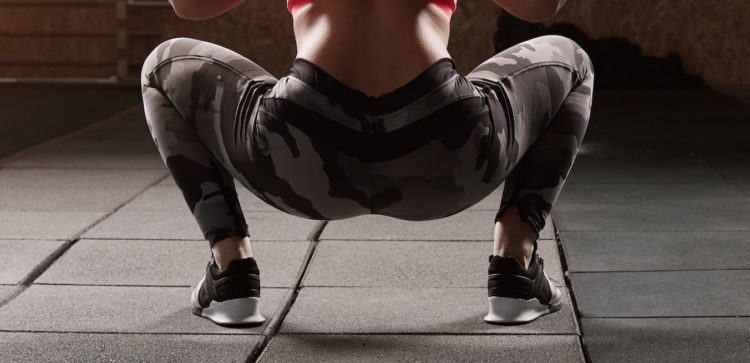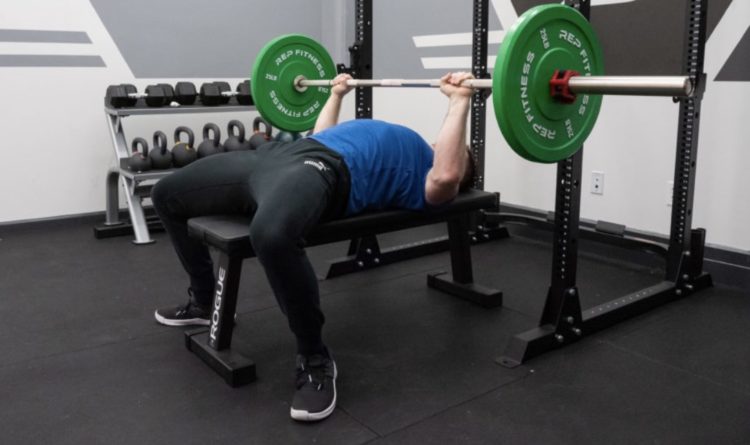6 Ways to Modify Powerlifts When the Barbells Are All Taken | BarBend (original) (raw)
In this time of social distancing, low capacity gyms, and lifters missing the barbell, there is a strong chance that when you’re lifting you either don’t have access to a barbell or they’re being used up. Or you might be nervous about using a barbell after someone else.
In any case it’s a good idea to have a Plan B. Having exercise variations that train the muscles and movements of the squat and bench without the barbell is handy to have in your back pocket. Because who has the time to wait around for the barbell when you’re jacked up and ready to go?
And here are 6 exercise variations when the barbell isn’t an option.
Editor’s note: The content on BarBend is meant to be informative in nature, but it shouldn’t take the place of advice and/or supervision from a medical professional. The opinions and articles on this site are not intended for use as diagnosis, prevention, and/or treatment of health problems. Speak with your physician if you have any concerns.

Veles Studio/Shutterstock
Squats
The barbell squats are the king of all the squats because these variations use the most weight. But that doesn’t mean you can’t train your legs with intensity with the other squat variations.
With these variations you can add intensity by slowing down the eccentric (3-5 seconds), adding a pause in the hole (3-5 seconds) and if you’re feeling sadistic, you can do both.
Here are 3 squat variations when all the squat racks are taken.
1. Belt Squats
If you don’t have the machine the weight belt is a great substitute, especially as it puts less stress on your spine. This is a quad dominant exercise, so supersetting with a glute/hamstring exercise works well. For example,
1A. Belt squats 12-15 reps
1B. Stability ball hip extension hamstring curl 12 reps
[Related: Our Complete Guide to the Belt Squat]
2. Dumbbell Squat Variations
Goblet squats are great and are a good alternative to barbell squats. But when load is the name of the game, I think these 2 dumbbell variations work well. The further away you hold them from the legs (Zercher hold, front squats, or overhead) the harder your legs and core will have to work.
You’ll be surprised how a relatively light weight feels when you squat.
3. Band Elevated Split Squat
When the barbell isn’t available it’s the perfect time to train your single leg strength. There are many variations of the split squat but adding a band around your knee ups the ante.
The resistance band behind the knee encourages terminal knee extension or TKE (co-contraction of the hamstrings and quadriceps muscles) for increased quad/glute contraction. You’ll be wishing you had a barbell instead when you feel how tough these are.
This exercise can be loaded goblet style or by holding the dumbbell by your side (easier), shoulder level, or overhead (harder). All work well.

Bench Press
The bench press is a fantastic upper body strength exercise, although it can be hard on your shoulders because it locks them into a fixed range of motion.
But dumbbells are easier on the shoulders because you can vary your grip and they don’t ‘lock you in’ to a certain pressing path. Dumbbells pressing is a great accessory exercise for the bench press but if they’re all taken, they are a great substitute as your primary compound lift for the day.
Here are 3 pressing variations when all the barbells are taken.
https://www.youtube.com/watch?v=KfYNhAGAm0w&feature=emb\_title
1. Mechanical Advantage Dumbbell Bench Press Drop Set
If you have access to an adjustable weight bench, you’ll be able to work your entire chest in a short amount of time.
Going from the weakest press position (high incline) to your strongest press position (flat) using the same weight with little rest in between is great for hypertrophy and for wicked chest pump.
If you have trouble ‘feeling’ your chest in the barbell press, this exercise is the cure.
When you’re planning on doing multiple sets, keep the reps between 8-12. But if you are going for a burnout, go to technical failure in each of the 3 pressing positions.
2. Dumbbell Floor Press
The dumbbell floor press helps improve your lockout strength as you receive little to no leg drive help while pressing from the floor as opposed to the barbell bench press.
Plus, the reduced range of motion helps take some stress of your anterior shoulder and gets the triceps and chest more involved. It’s a solid alternative when the barbells and benches are all taken.
Pairing it with another floor exercise works well. For example,
1A. Dumbbell floor press 8-12 reps
1B. Pullover with deadbug 6 reps on each leg
3. Decline Dumbbell Floor Press With Glute Bridge
Do you remember when there was a decline bench in every gym, and you had to fight for your right to use it? You can generate your own decline angle with a glute bridge because it puts your upper body on a downward angle.
The decline dumbbell floor press is a great exercise for strengthening your lower chest, although it can put extra strain on your anterior shoulder due to the increased range of motion.
So please be careful and let pain be your guide.
Editor’s note: This article is an op-ed. The views expressed herein and in the video are the author’s and don’t necessarily reflect the views of BarBend. Claims, assertions, opinions, and quotes have been sourced exclusively by the author.
Wrapping Up
It pays to have alternatives to your regular barbell exercises if they’re unavailable or causing you discomfort. These 6 exercises give your joints a break by giving you some variety, all while keeping the intensity high.
And that’s a good Plan B.
Featured image via Veles Studio/Shutterstock